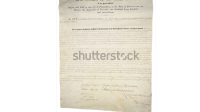Introduction: The Uprising That Shaped Western Canada
The Red River Rebellion of 1870, also known as the Red River Resistance, was a pivotal event in Canadian history that had lasting consequences for the development of the Canadian West and the rights of the Métis people. The rebellion took place in the Red River Colony, located in what is now Manitoba, and was led by the Métis leader Louis Riel. The conflict arose out of concerns over the transfer of the Hudson’s Bay Company’s vast territories, known as Rupert’s Land, to the newly formed Dominion of Canada without adequate consultation or consideration of the rights of the local inhabitants, particularly the Métis.
The Red River Rebellion was not merely a localized dispute but a significant moment in the broader narrative of Canadian nation-building. It highlighted the challenges of integrating diverse populations into a single national framework and set the stage for the eventual inclusion of Manitoba as a province in Canada. The rebellion also brought the Métis people and their leader Louis Riel to national prominence, leaving a complex legacy that continues to resonate in Canadian history.
Read Also: Confederation of Canada (1867): The Birth of a Nation
The Context of the Rebellion: The Métis and Rupert’s Land
To understand the Red River Rebellion, it is essential to explore the historical and social context of the Red River Colony and the Métis people who lived there. The region was a unique blend of cultures, shaped by the fur trade and the interactions between Indigenous peoples, European settlers, and the Hudson’s Bay Company.
The Métis: A Distinct Community
The Métis people are a distinct Indigenous group in Canada, with a mixed heritage of European (primarily French and Scottish) and Indigenous (mainly Cree, Ojibwe, and Saulteaux) ancestry. The Métis emerged as a distinct community in the Red River region during the 18th and 19th centuries, as European fur traders established relationships with Indigenous women, leading to the formation of families and communities with a blended cultural identity.
The Métis played a crucial role in the fur trade, serving as intermediaries between European traders and Indigenous nations. They were skilled hunters, trappers, and traders, and their unique culture reflected a synthesis of European and Indigenous traditions. By the mid-19th century, the Métis had established a strong presence in the Red River Colony, where they lived alongside European settlers and First Nations peoples.
Rupert’s Land and the Hudson’s Bay Company
Rupert’s Land was a vast territory in North America, encompassing much of present-day Canada, that had been granted to the Hudson’s Bay Company (HBC) by the British Crown in 1670. The HBC operated as a powerful monopoly, controlling the fur trade and exercising significant influence over the Indigenous peoples and settlers in the region.
By the mid-19th century, the HBC’s control over Rupert’s Land was increasingly challenged by the expansion of Canadian settlers into the West and the growing demand for land and resources. The British government, seeking to consolidate its North American territories, began negotiations to transfer Rupert’s Land to the Dominion of Canada, which had been created in 1867.
The planned transfer of Rupert’s Land to Canada raised concerns among the inhabitants of the Red River Colony, particularly the Métis, who feared that their land rights, cultural practices, and political autonomy would be threatened under Canadian rule. These concerns set the stage for the Red River Rebellion.
The Causes of the Rebellion: Land Rights and Political Representation
The Red River Rebellion was driven by a combination of factors, including fears over land rights, concerns about cultural preservation, and demands for political representation. The Métis and other residents of the Red River Colony were determined to assert their rights and protect their way of life in the face of impending changes.
The Fear of Land Dispossession
One of the primary causes of the Red River Rebellion was the fear of land dispossession among the Métis and other inhabitants of the Red River Colony. The Métis had established a system of landholding based on river lots, long and narrow strips of land that provided access to the Red and Assiniboine Rivers. This system was well-suited to the agricultural and trading practices of the Métis, but it was not recognized by the Canadian government.
When the Canadian government began preparations to take control of Rupert’s Land, there were widespread concerns that the traditional landholding patterns of the Métis would be ignored or disrupted. The government’s surveyors, who arrived in the Red River Colony in 1869 to begin surveying the land for future settlement, did not consult with the local population and seemed intent on imposing a grid system of land division that was incompatible with the Métis way of life.
The fear of losing their land and being displaced by incoming settlers from Canada East and Canada West (Ontario and Quebec) fueled the Métis’ determination to resist the Canadian government’s plans and assert their rights to their ancestral lands.
The Demand for Political Representation
In addition to concerns about land rights, the residents of the Red River Colony were also worried about their lack of political representation in the new Canadian government. The transfer of Rupert’s Land to Canada was being negotiated without the input or consent of the local population, leading to fears that their interests would be ignored in the new political order.
The Métis, in particular, were concerned about the preservation of their cultural and linguistic rights. They wanted assurances that their French language and Catholic religion would be respected and that they would have a voice in the governance of the region.
The lack of consultation and the exclusion of the Red River Colony’s residents from the decision-making process contributed to a growing sense of alienation and resentment. The Métis and their allies demanded that any transfer of authority include guarantees of their rights and representation.
The Rebellion Unfolds: Louis Riel and the Provisional Government
The Red River Rebellion began in earnest in the fall of 1869, as the Métis, under the leadership of Louis Riel, took steps to assert control over the Red River Colony and resist the Canadian government’s plans.
Louis Riel: The Métis Leader
Louis Riel was a charismatic and articulate leader who emerged as the central figure in the Red River Rebellion. Born in the Red River Colony in 1844, Riel was educated in Montreal and was deeply committed to the rights and culture of the Métis people. He returned to the Red River region in 1868, where he quickly became involved in the growing resistance movement.
Riel was a passionate advocate for the Métis and their right to self-determination. He believed that the Métis had the right to govern themselves and that their land, culture, and political rights must be respected by the Canadian government. Riel’s leadership was instrumental in uniting the Métis and other residents of the Red River Colony in their resistance to the Canadian government’s plans.
The Seizure of Fort Garry and the Establishment of the Provisional Government
In October 1869, Riel and his supporters took decisive action by seizing Fort Garry, the administrative center of the Red River Colony. This bold move gave the Métis control over the region and sent a clear message to the Canadian government that they would not accept the transfer of authority without guarantees of their rights.
Following the seizure of Fort Garry, Riel established a Provisional Government to represent the interests of the Red River Colony’s residents and negotiate with the Canadian government. The Provisional Government was composed of representatives from various communities within the colony, including the Métis, European settlers, and First Nations.
Riel’s Provisional Government sought to negotiate terms for the entry of the Red River Colony into Canada that would protect the rights of the Métis and ensure their political representation. The government drafted a List of Rights, which outlined the conditions under which the colony would agree to join the Dominion of Canada. These conditions included guarantees of land rights, language rights, and religious freedom, as well as the establishment of a locally elected legislature.
The Crisis and Resolution: The Execution of Thomas Scott and the Manitoba Act
The Red River Rebellion reached a critical point in early 1870, as tensions between the Provisional Government and the Canadian government escalated. The situation was further complicated by divisions within the colony and the intervention of outside forces.
The Execution of Thomas Scott
One of the most controversial and consequential events of the Red River Rebellion was the execution of Thomas Scott, an English-speaking settler from Ontario who had been captured by Riel’s forces. Scott was a vocal opponent of the Provisional Government and had been involved in an attempted uprising against Riel’s authority.
In March 1870, Scott was tried by a Métis court for insubordination and sentenced to death. His execution, carried out on March 4, 1870, provoked outrage in Ontario and intensified anti-Métis sentiment in Canada East. Scott’s death made Riel a deeply polarizing figure, viewed as a hero by some and a villain by others.
The execution of Scott heightened tensions between the Provisional Government and the Canadian government and made it more difficult to reach a peaceful resolution to the conflict. However, it also underscored the determination of the Métis to defend their rights and resist any attempts to undermine their authority.
The Manitoba Act: A Compromise Solution
Despite the escalating tensions, negotiations between the Provisional Government and the Canadian government continued, leading to the passage of the Manitoba Act in May 1870. The Manitoba Act was a compromise that sought to address the concerns of the Red River Colony’s residents while facilitating the region’s entry into Canada as a province.
The Manitoba Act created the province of Manitoba, which joined the Dominion of Canada on July 15, 1870. The act included several provisions that reflected the demands of the Métis and other residents of the Red River Colony:
- Land Rights: The Manitoba Act guaranteed that 1.4 million acres of land would be set aside for the Métis, recognizing their traditional landholding patterns and providing for their future needs.
- Language and Religious Rights: The act ensured that both English and French would be official languages in Manitoba and that Catholics and Protestants would have equal rights to education.
- Political Representation: The act established a locally elected legislature in Manitoba, giving the province’s residents a voice in their own governance.
The Manitoba Act was a significant achievement for the Métis and their allies, as it recognized many of their demands and provided a framework for their inclusion in the Canadian Confederation. However, the implementation of the act was fraught with challenges, and many of the promises made to the Métis were not fully realized, leading to continued tensions and conflicts in the years that followed.
The Aftermath and Legacy of the Red River Rebellion
The Red River Rebellion had a profound impact on the development of Western Canada and the rights of the Métis people. While the rebellion achieved some of its immediate goals, it also set the stage for ongoing struggles and debates over land rights, cultural preservation, and political representation.
The Exile of Louis Riel
Following the conclusion of the Red River Rebellion, Louis Riel became a controversial and polarizing figure in Canadian politics. While he was hailed as a hero by many Métis and French Canadians, he was vilified by others, particularly in Ontario, where the execution of Thomas Scott had fueled anti-Métis sentiment.
Fearing for his safety and facing the threat of arrest, Riel fled to the United States in August 1870. He would spend the next several years in exile, living in various American cities while continuing to advocate for the rights of the Métis and other marginalized groups in Canada.
Riel’s exile marked the beginning of a difficult period for the Métis people, who continued to face challenges related to land dispossession, discrimination, and the erosion of their cultural and political rights. Riel’s legacy as a leader and advocate for the Métis would later be recognized and celebrated, but his life would be marked by ongoing struggles and conflicts.
The Continuing Struggles of the Métis
The promises made to the Métis in the Manitoba Act were not fully honored, leading to continued struggles and tensions in the years following the Red River Rebellion. Many Métis families were unable to secure the land that had been promised to them, and the arrival of new settlers from Ontario and other parts of Canada led to increased pressure on Métis communities.
The Métis were gradually marginalized and pushed to the peripheries of Canadian society, both geographically and politically. Their rights and cultural practices were often ignored or undermined by the Canadian government, leading to a sense of betrayal and resentment.
The Red River Rebellion was not the end of the Métis struggle for recognition and rights. The issues that sparked the rebellion would resurface in the 1880s with the Northwest Rebellion, another conflict led by Louis Riel, which would result in Riel’s execution and further marginalization of the Métis people.
The Legacy of the Red River Rebellion
The Red River Rebellion left a lasting legacy in Canadian history, shaping the development of Western Canada and influencing the relationship between the Canadian government and Indigenous peoples. The rebellion highlighted the challenges of integrating diverse populations into the Canadian Confederation and underscored the importance of recognizing and protecting the rights of marginalized groups.
The establishment of Manitoba as a province was a significant achievement, but it also revealed the limitations of the Canadian government’s willingness to fully address the concerns of the Métis and other Indigenous peoples. The rebellion and its aftermath serve as a reminder of the complex and often contentious process of nation-building in Canada.
Louis Riel, the leader of the Red River Rebellion, remains a complex and controversial figure in Canadian history. While his actions during the rebellion were divisive, his advocacy for the rights of the Métis and his vision for a more inclusive Canada have earned him a place as one of the country’s most important historical figures. Today, Riel is recognized as a founder of Manitoba and a champion of Indigenous rights, and his legacy continues to inspire discussions about justice, identity, and reconciliation in Canada.
Conclusion: Reflecting on the Red River Rebellion
The Red River Rebellion of 1870 was a pivotal moment in the history of Canada, marking the first major resistance to the expansion of Canadian Confederation into the West. The rebellion, led by Louis Riel and the Métis people, was driven by concerns about land rights, cultural preservation, and political representation. While the rebellion achieved some of its goals, including the creation of the province of Manitoba, it also exposed the deep divisions and challenges that would continue to shape the development of Canada.
The legacy of the Red River Rebellion is complex and multifaceted, reflecting both the successes and the failures of the struggle for rights and recognition. The rebellion remains an important chapter in the history of Western Canada and the Métis people, and it continues to resonate in discussions about justice, reconciliation, and the rights of Indigenous peoples in Canada.
FAQ About the Red River Rebellion (1870)
What was the Red River Rebellion?
The Red River Rebellion, also known as the Red River Resistance, was an uprising in 1870 led by the Métis people and their leader Louis Riel in the Red River Colony (now Manitoba). The rebellion was sparked by concerns over land rights, cultural preservation, and political representation as the Canadian government sought to annex Rupert’s Land.
Who was Louis Riel?
Louis Riel was a Métis leader and a central figure in the Red River Rebellion. He advocated for the rights of the Métis people and sought to protect their land, culture, and political autonomy. Riel played a key role in establishing a Provisional Government in the Red River Colony and negotiating the terms of Manitoba’s entry into Canada.
What were the main causes of the Red River Rebellion?
The main causes of the Red River Rebellion included fears of land dispossession among the Métis, concerns about the lack of political representation, and the desire to protect the cultural and linguistic rights of the Métis and other residents of the Red River Colony.
What was the outcome of the Red River Rebellion?
The Red River Rebellion resulted in the passage of the Manitoba Act, which created the province of Manitoba and included provisions for land rights, language rights, and political representation. However, many of the promises made to the Métis were not fully realized, leading to continued struggles and tensions.
What is the legacy of the Red River Rebellion?
The legacy of the Red River Rebellion includes the establishment of Manitoba as a province and the recognition of the Métis as a distinct Indigenous group with specific rights. The rebellion also highlighted the challenges of integrating diverse populations into Canada and continues to influence discussions about justice and reconciliation in Canadian society.







Thank you for your articles. http://www.hairstylesvip.com They are very helpful to me. Can you help me with something?